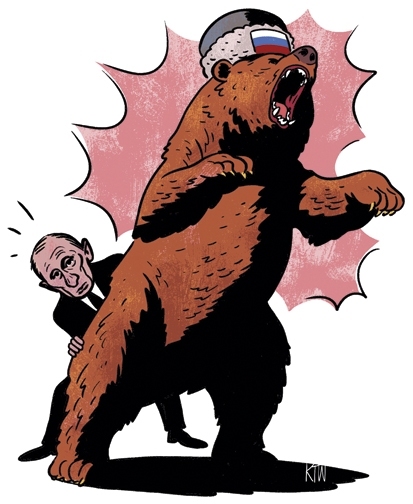Whose side is Vladimir Putin on? It’s a question worth asking, because of late the Kremlin has come closer and closer to the tipping point between obstreperousness and outright hostility towards the West. Last week Barack Obama cancelled a September summit with Putin after Russia offered asylum to the National Security Agency whistleblower Edward Snowden. But in truth the Snowden affair is only the latest and most trivial of a long and growing list of issues where Russia and the US are on radically opposite sides.
Syria probably tops the list — at least in terms of urgency and human cost. Russia has offered diplomatic support to the Assad regime by using its veto on the UN Security Council to block sanctions and intervention. More seriously, Russia has become the arsenal of dictatorship, selling over $1.5 billion of arms to Assad since the start of the civil war. Last month Russia escalated its military aid still further after foreign minister Sergei Lavrov confirmed that Kremlin would deliver S-300 anti-aircraft missile systems to Damascus — the Israeli prime minister, Binyamin Netanyahu, visited Putin in May to beg him not to do that. Lavrov insists that only ‘defensive’ materiel is being supplied to the Syrians. But the S-300 missiles will change the balance of the war — for instance by substantially complicating any western effort to impose a no-fly zone.
For the first time in a generation Russia and Nato find themselves backing opposite sides in a proxy war. Last June a Turkish jet was shot down off the coast of Syria by a Russian-supplied Panshir M-1 missile — possibly, according to Russian press reports, targeted by one of the Russian advisers sent to install the missiles and train Syrian operators. More Russian personnel are due to come and install the S-300 systems. At the same time the Pentagon confirmed in June that US F-16 warplanes and Patriot anti-aircraft missiles would remain in Jordan after the end of a joint drill this month, fuelling speculation that Washington was preparing for a no-fly zone.








Comments
Join the debate for just £1 a month
Be part of the conversation with other Spectator readers by getting your first three months for £3.
UNLOCK ACCESS Just £1 a monthAlready a subscriber? Log in